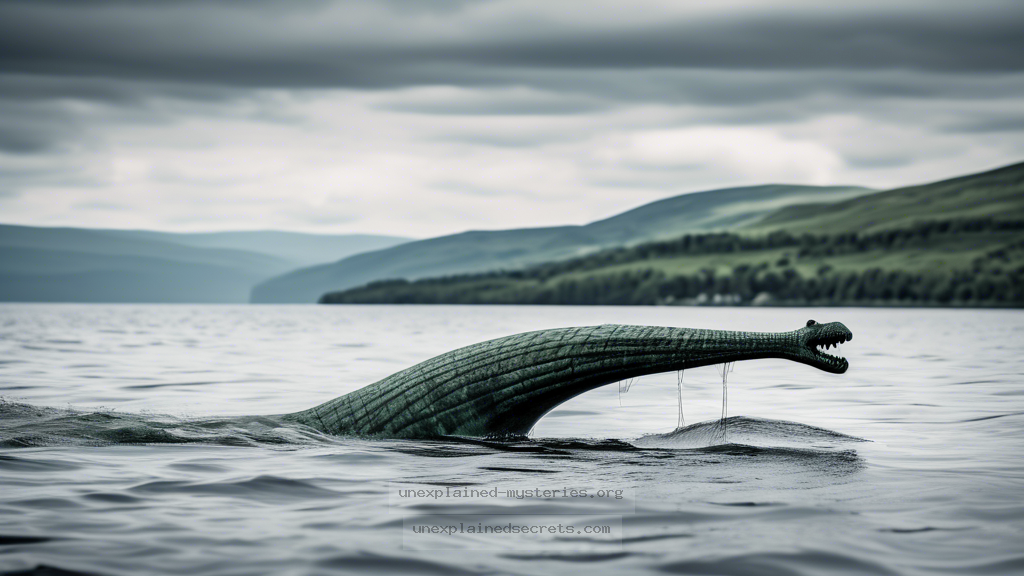What Recent Sonar Discoveries Reveal About the Loch Ness Monster Mystery?
What Recent Sonar Discoveries Reveal About the Loch Ness Monster Mystery?
The Loch Ness Monster, affectionately known as “Nessie,” has captivated the imagination of people around the globe for decades. The allure of this mythical creature, said to lurk in the depths of Scotland’s largest freshwater lake, has inspired countless expeditions and investigations. With each passing year, technology advances, and so do our methods of exploration. This begs the question: what have recent sonar discoveries revealed about the Loch Ness Monster mystery? In this blog post, we will dive deep into sonar technology, historical sightings, and the implications of these discoveries, illuminating the enigma surrounding Nessie.
Historical Context: The Legend of Loch Ness
The legend of the Loch Ness Monster dates back to ancient times. The first recorded sighting occurred in the 6th century when St. Columba, an Irish monk, is said to have encountered a “water beast” in the loch. This encounter set the stage for centuries of folklore and fascination. As the 20th century approached, the legend gained momentum, particularly after the infamous photograph known as the “Surgeon’s Photograph” surfaced in 1934, purportedly showing Nessie’s head and neck protruding from the water.
Over the years, numerous eyewitness accounts, photographs, and even videos have fueled speculation about the creature’s existence. Yet, despite the extensive lore, scientific investigations into the Loch Ness Monster have yielded mixed results. The advent of sonar technology in the latter half of the 20th century provided new avenues for exploration, allowing researchers to probe the depths of Loch Ness in ways previously unimaginable.
Understanding Sonar Technology
Sonar, or Sound Navigation and Ranging, is a technique that uses sound propagation to navigate, communicate, or detect objects underwater. Sonar systems emit pulses of sound waves and measure the time it takes for the waves to bounce back after hitting an object. This technology has become a vital tool for marine research and exploration.
In the context of Loch Ness, sonar technology has allowed researchers to create detailed maps of the lake’s underwater landscape and search for anomalies that could indicate the presence of large animals. Two main types of sonar technology are commonly used: traditional sonar and side-scan sonar. Traditional sonar provides depth readings, while side-scan sonar produces images of the lakebed, revealing potential structures or creatures hidden beneath the surface.
Recent Sonar Discoveries: What Have We Found?
In recent years, several sonar expeditions have taken place in Loch Ness, with researchers employing advanced equipment to investigate the depths. One notable expedition occurred in 2018, where a team from the Loch Ness Exploration project utilized sonar technology to conduct a detailed survey of the loch. They discovered numerous anomalies, including large underwater objects that sparked renewed interest in the possibility of Nessie’s existence.
In addition to the 2018 expedition, a 2020 study conducted by the University of the Highlands and Islands used both sonar and environmental DNA (eDNA) sampling to analyze the lake’s biodiversity. While no direct evidence of the Loch Ness Monster was found, researchers did uncover a variety of fish species, including eels, which some enthusiasts speculate could be linked to Nessie sightings. This ongoing exploration continues to provide valuable insights into the loch’s ecosystem and its mysteries.
Theories on the Nature of Nessie
The Loch Ness Monster has been variously described as a plesiosaur, a large eel, or even a giant fish. Theories abound regarding what Nessie might actually be, with some researchers suggesting that the numerous sightings could be attributed to misidentified animals or natural phenomena. For instance, the size and shape of an otter or a swimming deer could easily be misinterpreted as something more mysterious.
Additionally, some scientists propose that the loch’s murky waters could play tricks on the eyes, creating optical illusions that lead to sightings. The depths of Loch Ness reach approximately 230 meters (750 feet), making it one of the deepest lakes in Scotland. The combination of depth, darkness, and the unique underwater landscape adds complexity to any investigation into the creature’s existence.
Practical Implications: What Does This Mean for Cryptozoology?
The ongoing investigations into Loch Ness and the sonar discoveries have broader implications for the field of cryptozoology. As researchers continue to apply scientific methods and technologies to the study of cryptids, the line between myth and reality becomes increasingly blurred. While the Loch Ness Monster remains an enigma, the application of sonar technology is a testament to the importance of scientific inquiry in the pursuit of understanding unexplained phenomena.
Key Insight: Advances in technology allow for more thorough investigations of cryptids like Nessie, enhancing our understanding of unexplained mysteries.
Alternative Perspectives: Skepticism vs. Belief
Within the community of Loch Ness enthusiasts, there exists a divide between skeptics and believers. Skeptics argue that the lack of conclusive evidence after decades of exploration indicates that Nessie likely does not exist. They point to the numerous hoaxes, misidentifications, and the psychological phenomenon known as pareidolia, where people see familiar patterns in random stimuli as explanations for sightings.
On the other hand, believers maintain that the absence of definitive proof does not negate the possibility of Nessie’s existence. They argue that the vastness and unexplored depths of Loch Ness leave room for the unknown. This dichotomy often fuels lively debates and discussions, showcasing the ongoing struggle between belief in the paranormal and the quest for scientific validation.
Common Misconceptions About the Loch Ness Monster
Despite the wealth of information available, several misconceptions about the Loch Ness Monster persist. One common myth is that Nessie is a single, solitary creature. In reality, it is possible that multiple large animals could inhabit the loch, leading to various sightings that have contributed to the legend. Another misconception is that all sightings are hoaxes or misidentifications; while some are indeed fabricated, many credible witnesses have reported their experiences.
Furthermore, the belief that sonar technology has definitively proven the existence of Nessie is misleading. While sonar has detected large underwater objects, the identity of these objects remains uncertain. They could be anything from debris to large fish, leaving the mystery of Nessie unsolved.
Common Misconception: Nessie is a single creature; it is more plausible that multiple large animals inhabit Loch Ness.
Best Practices for Investigating the Loch Ness Monster
For those interested in investigating the Loch Ness Monster, it is essential to approach the subject scientifically. Here are some best practices:
- Utilize Technology: Employ sonar and underwater cameras to gather data and evidence.
- Collect Data: Document all sightings meticulously, noting time, location, and environmental conditions.
- Engage with Experts: Collaborate with marine biologists and cryptozoologists to gain insights and expertise.
- Stay Skeptical: Approach evidence critically, recognizing potential explanations for sightings.
By adhering to these practices, enthusiasts can contribute to a more rigorous investigation of the Loch Ness Monster, whether seeking to confirm or debunk the legend.
Future Developments: Ongoing Research and Exploration
The future of Loch Ness exploration is bright, with new technologies continuously emerging. As underwater drones become more sophisticated and affordable, they may play a crucial role in uncovering the secrets of the loch. Additionally, the application of environmental DNA sampling could provide insights into the biodiversity of Loch Ness, potentially revealing new species or confirming known ones.
Ongoing public interest and funding for research initiatives will likely spur further expeditions, ensuring that the Loch Ness Monster remains a topic of intrigue and exploration. Scientists and enthusiasts alike continue to share their findings and experiences, fostering a community dedicated to understanding one of the most enduring mysteries in the world.
Conclusion: The Enduring Mystery of the Loch Ness Monster
The mystery of the Loch Ness Monster endures, captivating audiences and researchers alike. Recent sonar discoveries have provided tantalizing hints but have yet to yield conclusive evidence of Nessie’s existence. As technology evolves and our understanding of the natural world expands, we remain on the brink of discovery. The debate between skeptics and believers continues, ensuring that the legend of Nessie will be a source of fascination for generations to come. Whether one believes in the Loch Ness Monster or not, the journey of exploration and inquiry surrounding this enigma is undoubtedly valuable.
Other Articles
Recent Posts
- What Happened to Flight MH370? The Conspiracy Theories That Still Haunt Us
- What Secrets Lurk Within the Walls of the Infamous Trans-Allegheny Lunatic Asylum?
- What Evidence Supports the Existence of Bigfoot in the Pacific Northwest?
- What Happened to the Indus Valley Civilization? Unraveling the Mysteries of Ancient Urban Life
- Can Telepathy Be Scientifically Proven Through Laboratory Evidence?







